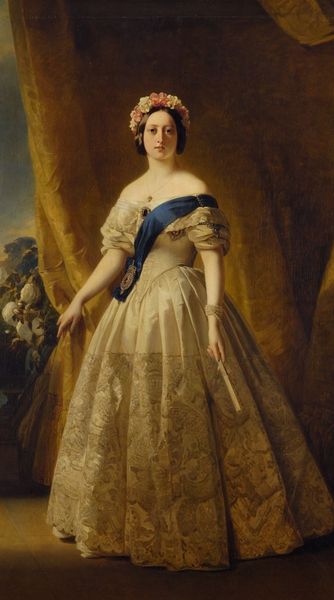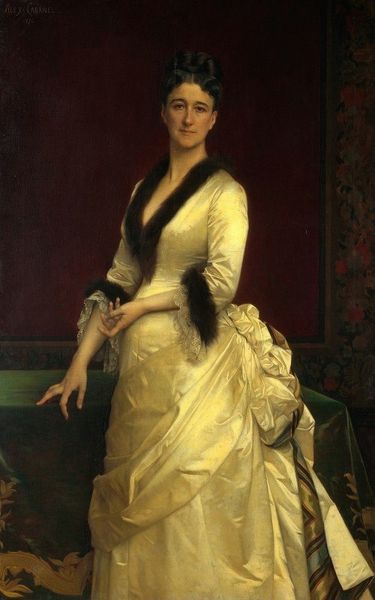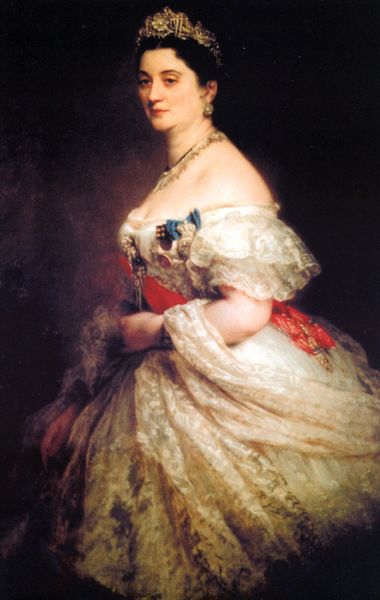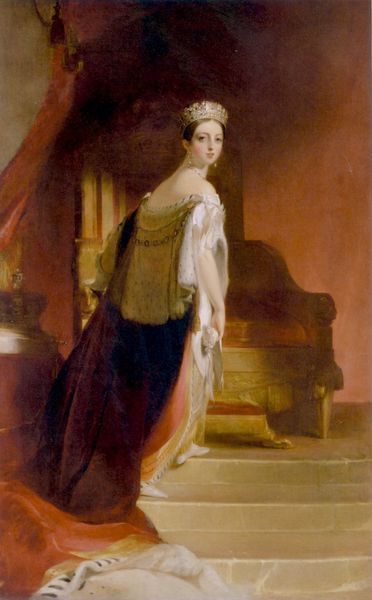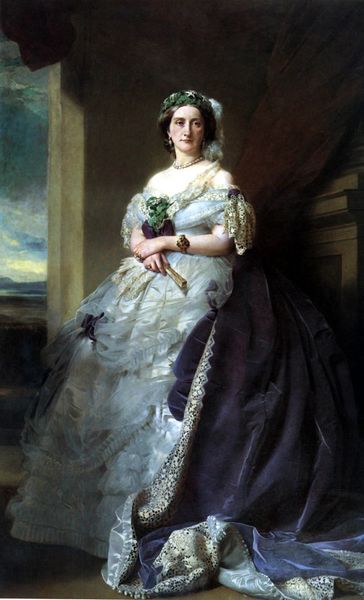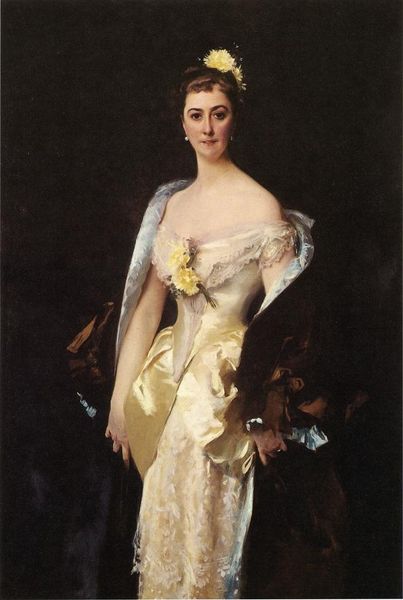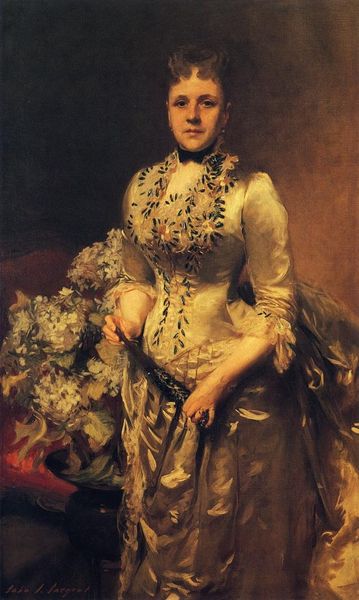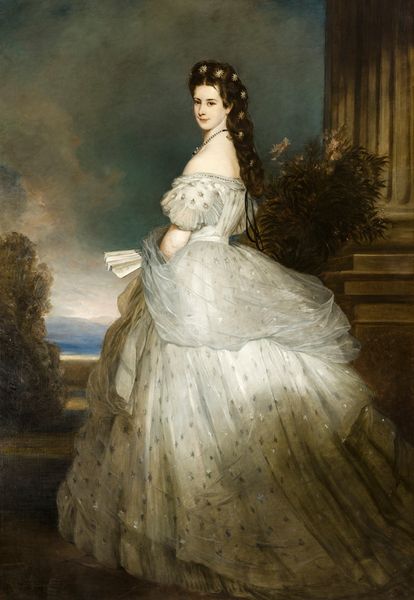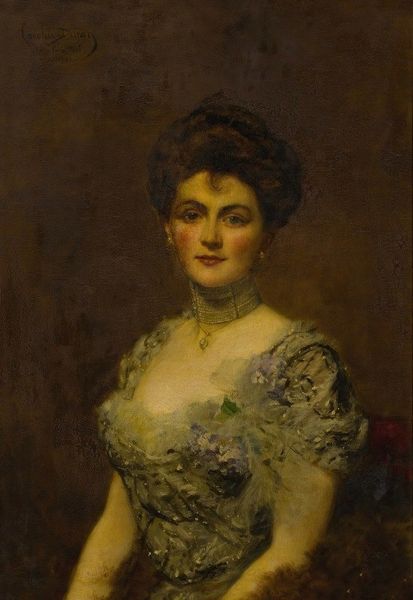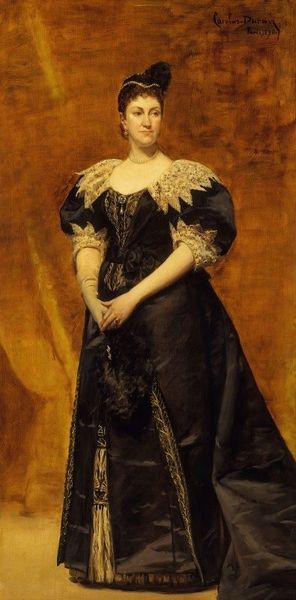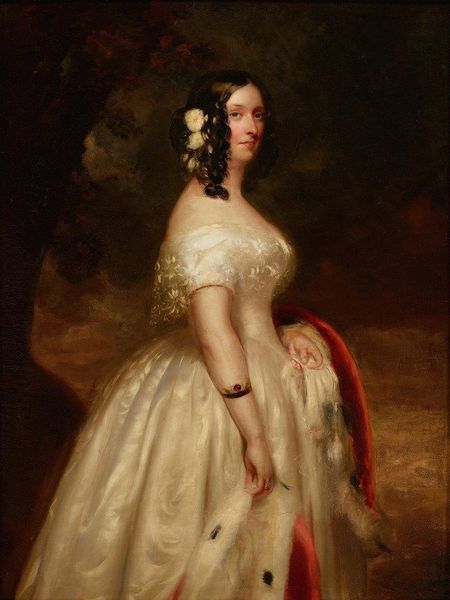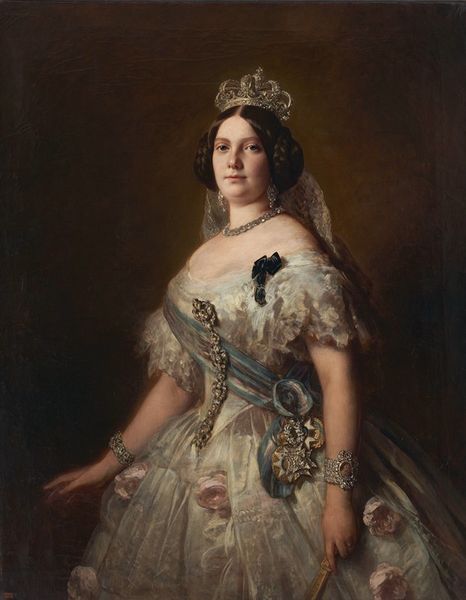
Copyright: Public domain
Henri Regnault painted this portrait of Mme Fouques-duparc, probably in the late 1860s, capturing the sitter in a moment of poised elegance. The choice of a full-length portrait, the luxurious fabric of her dress, and the presence of a well-groomed dog all speak to the sitter's social standing within the Second Empire in France. This was a time of rapid modernization under Napoleon III, yet traditional class structures remained firmly in place. Regnault, trained in the academic style, shows his ability to depict textures and light, conforming to the expectations of portraiture at the time. However, if we consider the politics of imagery, we might ask about the representation of women in art during this period. How does this portrait reinforce or challenge social norms? To answer these questions we might consult historical documents, fashion plates, and critical reviews to better understand the social conditions that shaped its production. The meaning of art, after all, is contingent on its social and institutional context.
Comments
No comments
Be the first to comment and join the conversation on the ultimate creative platform.
